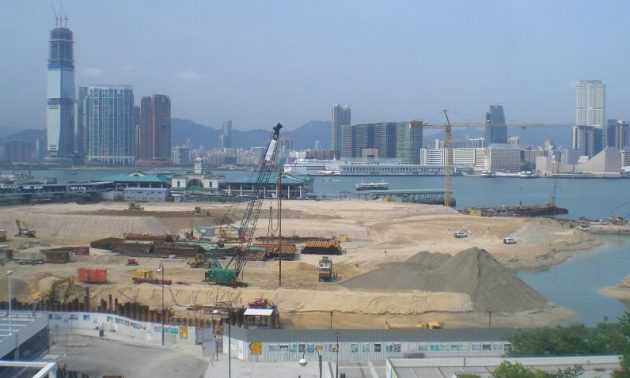Grandiose plan for an island’s metropolis hits choppy waters
12 January, 2019

Legislators are continuing to make waves with plans to house more than one million additional people on four artificial islands near Disneyland, with critics questioning the enormous cost and likely political overtones.
Unveiled by Chief Executive Carrie Lam in October, the ambitious plan was grandly named the East Lantau Metropolis, and will be built under the Lantau Tomorrow Vision as the ultimate solution to a city where space and land are always at a premium. The asking price: HK$500 billion (US$63.8 billion) for a project covering 17 square kilometers.
About one fifth the size of Manhattan, the “city of the future” will be an environmental showpiece, with renewable energy, “green” transport and a higher greening ratio than elsewhere in the city. There will be 400,000 units housing an estimated 1.1 million people, aimed at those who are struggling to get a foothold in the world’s least affordable market.
The schedule is for reclamation works to begin by 2025, with the first batch of residential units being ready in 2032; however, there is no fixed timetable for the subsequent phases. Either way, it will be implemented long after Lam has finished her tenure as chief executive.
Bloomberg noted in a commentary that the reclamation plan illustrates the lengths to which the government will go to add housing in an expensive, space-starved city.
It is the eye-watering price tag that has attracted most attention. Critics note that the project will drain half of the city’s budget at 2018 levels — as of March last year, fiscal revenues stood at HK$1.09 trillion. Others argue that the project is fiscally sound because authorities can eventually recoup investment through auctions of domestic and commercial plots.
The Hong Kong Port Area of the Hong Kong-Zhuhai-Macau Bridge was also constructed on a reclaimed plot of land. Photo: Twitter
Some skeptics suspect that Lam wants to use the mega project to curry favor with Beijing. It is believed that Chinese contractors, known for their engineering and construction capabilities, will take the lion’s share of work created from the city’s hefty outlay.
The project is also seen as a further step toward Hong Kong’s ultimate integration with China, given that it is close to cross-border transport infrastructure linking the city to neighboring Guangdong province, such as the 55-km Hong Kong-Zhuhai-Macau Bridge, opened in October.
One issue that could raise concerns over the use of manmade islands is climate change. Some environmentalists have even warned the islands could be hit head-on by a huge tsunami or super typhoon, now that extreme weather events are becoming normal occurrences.
Former Hong Kong Observatory director Lam Chiu-ying also fears that the reclaimed area would be vulnerable to rising sea levels and unpredictable gales and storms.
A computer-generated image of a community on a reclaimed island. Photo: Handout
The government has stressed that reclamation techniques are effective in reducing impacts on surrounding water quality and ecological systems, through the use of non-dredging methods and deep cement mixing.
Shorelines of the reclaimed islands would have higher breakwaters, wave breakers and non-building buffer zones, which have proven to be effective in safeguarding residents and infrastructure.
